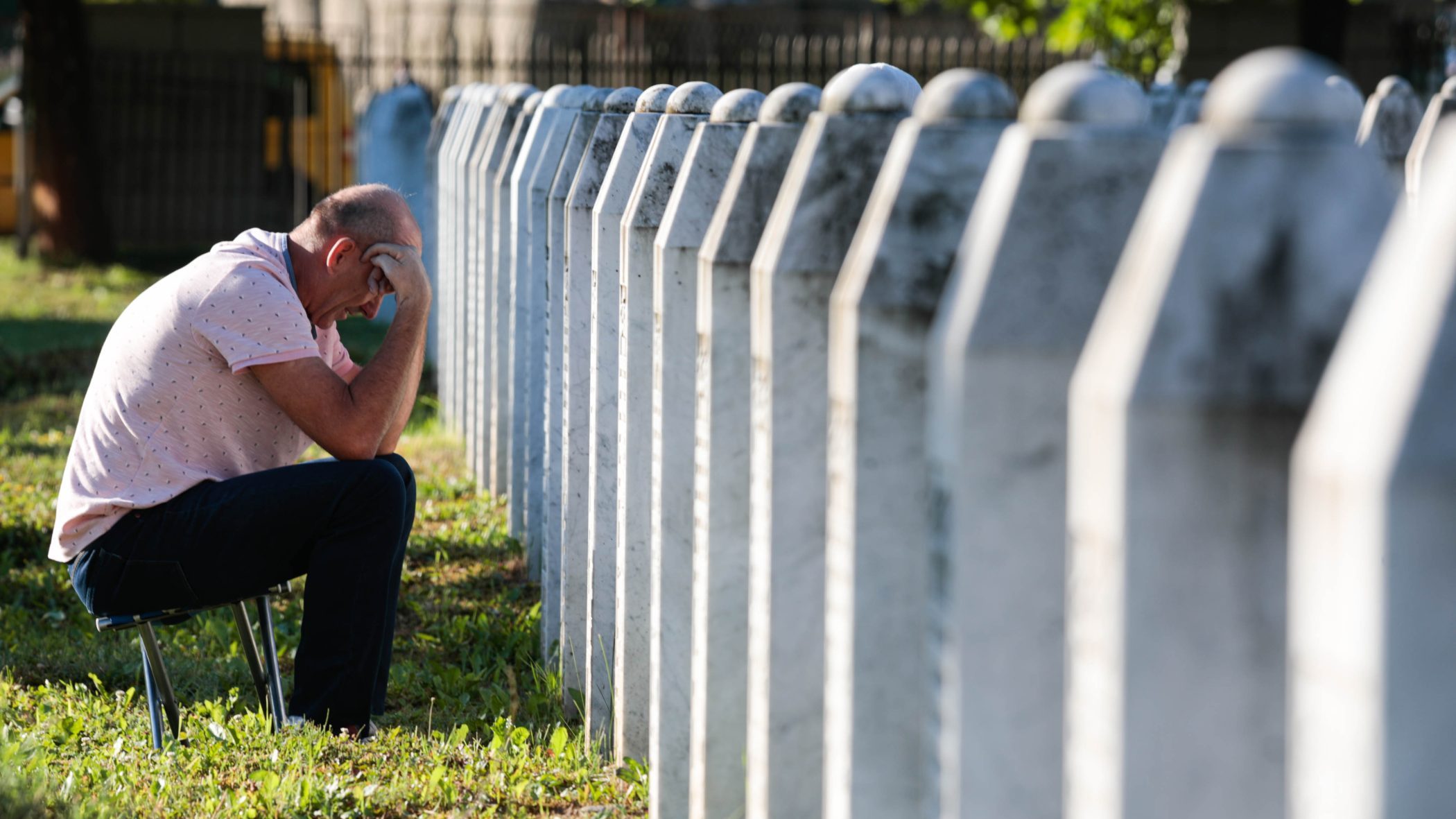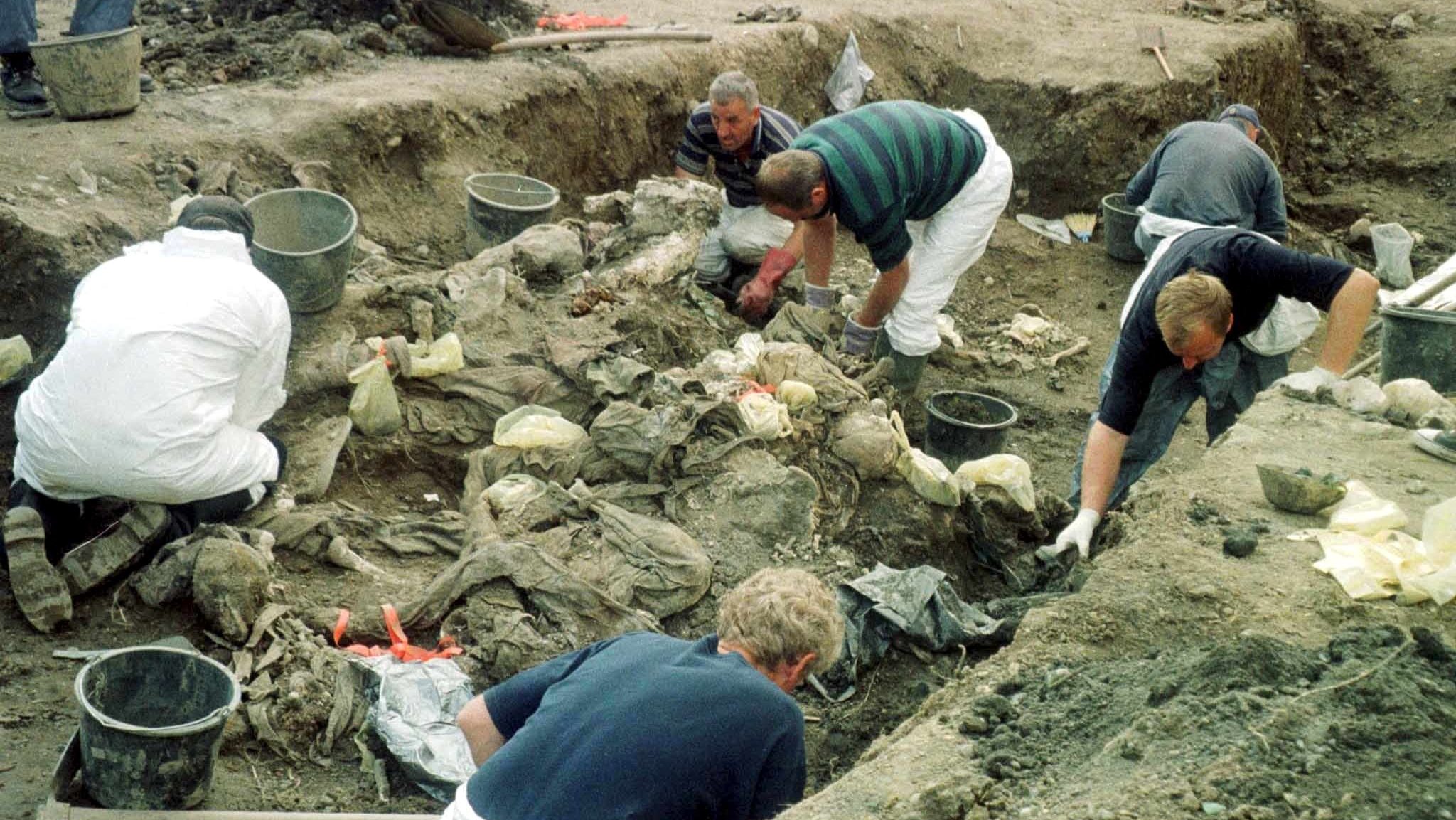This post is also available in: Bosnian
Following the trial, which has lasted more than two years, the Trial Chamber is now due to pronounce a first instance verdict against Zemir Kovacevic, former member of the Interventions Squad with the First Bosanski Brod Brigade, which later turned into the 101st Bosanski Brod Brigade of the Croatian Defence Council, HVO.
Presenting its closing statement, the State Prosecution requested the Court to pronounce Kovacevic guilty under all counts contained in the indictment. Prosecutor Mirza Hukeljic said that Kovacevic’s guilt had been proved for participation in the murder of nine Serb civilians in Sijekovac on March 26, 1992, as well as burning and pillaging houses in that village, arrest of civilians and taking them away in order to use them for forced labour.
Hukeljic said that State Prosecution witnesses had clearly seen the murders of Serb civilians in Sijekovac and that there was no doubt that Kovacevic was guilty.
On the other hand, Defence attorney Bajro Avdic pointed out that the Prosecution had not proved Kovacevic’s guilt, calling on the Court of Bosnia and Herzegovina to pronounce a verdict of release, considering the fact that, in his opinion, the witnesses’ statements about the murders in Traktorska Street were unreliable.
The trial of Kovacevic began in July 2012, following his extradition from Sweden to Bosnia and Herzegovina. He has been held in custody since October 2011.
Witnesses of Brutal Murders
Milja Zecevic and Sasa Milosevic were the key State Prosecution witnesses. They saw the murders committed on March 26, 1992 and said that Kovacevic participated in that crime.
Milosevic, who was ten years old at the time, said that he was in his house in Sijekovac village with his parents and two brothers on March 26, 1992, when he heard someone inviting Serbs via megaphone to hand over their weapons.
“A minute or two later we heard shooting. My father and brother Zeljko stayed in the house, while we moved to Milan Zecevic’s basement. About ten of us were in the basement. We heard shooting. The house began burning. Twenty minutes later a soldier came in. They took us out, swearing, threatening and hitting us with rifle butts and legs. They ordered us to lie down in a puddle,” Milosevic said.
He said that one of the soldiers then put a knife to his throat and said that he would slaughter him, but he gave up. After that he saw some unknown soldiers killing Vaso Zecevic and Mirko Radanovic.
“They ordered us to move towards the road. They separated my brother Dragan from our mother. Later on I found out that he was killed. We came to the road. I saw Zemir Kovacevic approaching Jovo Zecevic, telling him to walk faster. The man said something and Zemir then shot at him. Zemir then approached Petar, hit him with a rifle butt and shot at him too,” Milosevic said.
According to Milosevic’s testimony, Serb civilians were then taken to Niko Tomas’s house and the local Centre in Sijekovac. Some time later he and his mother were transferred to Derventa.
Milja Zecevic told the Court that her husband and three sons were killed in Sijekovac on March 26, 1992.
She said that “neighbour Zemir” from Sijekovac killed her husband Jovan and son Petar.
“Petar was killed on the road. Jovo was killed in my arms. Zemir killed him. Petar was saying: ‘Protect me, mother’, but Zemir killed him using firearms. Milan and Vaso were killed in the yard after having come out of the basement. I do not know who killed them,” Zecevic said.
When asked where she knew Kovacevic from, the witness said that she recognised him after somebody had called him by his name and that she saw him beating her husband.
“Somebody addressed him: ‘Zemir, we are neighbours’. I saw him beating my husband with his hands. I heard and saw that. I was taking Jovo by his hand. He fell down, as he was sick. Zemir just pulled a pistol out of his pocket and shot him to his forehead. He killed Jovo and left… I am one hundred percent sure,” witness Zecevic said.
During the cross-examination Kovacevic told Milosevic that, “in case you testify like that, the truth about Sijekovac will not be revealed.” Also, he said that he had never seen Milja Zecevic before.
During the evidence presentation process, the State Prosecution examined about 20 local residents of Sijekovac, who confirmed having heard shooting in the village and seen some houses on fire on March 26. Some of them said that they heard indictee Kovacevic’s name being mentioned in relation to the murders in Sijekovac.
Witness Zdravko Trifunovic said that he saw some armed people gathering in the vicinity of his house on March 26, 1992. “At some stage the shooting began. I noticed that fire was opened towards my house as well. After that I heard Nijaz Causevic telling people, via megaphone, to surrender. We came out of the house into the yard, where we were picked up by Kovacevic,” the witness said, adding that the indictee took him to his neighbour’s garage, holding a rifle pipe to his nape.
The witness said that on that day he was taken, along with his family and other local residents, to the central part of Sijekovac, where they were briefly held in the local community office before being transferred to Fahrudin Dugajlic’s house.
“Twenty-seven of us were held in that house. Branislav Zecevic was with us as well. At some stage his brother’s wife came in and told him that his three brothers and father had been killed. He began pulling his hair and screaming,” the witness said, adding that he heard from Milja Zecevic that Kovacevic had participated in those murders.
Indictee Zemir Kovacevic was removed from the courtroom during the cross-examination of Trifunovic, because he was saying that he should be ashamed of the way he testified and that he was a false witness.
A few Sijekovac residents said that their houses were pillaged or set on fire and that they were taken to other locations in order to perform forced labour.
Witness Lazar Jovicic said that he was used for digging trenches in the spring of 1992.
“I did it for one day only. A truck came and took us to a military ramp. We then had to dig canals and trenches near Kricanovo. We were surrounded by soldiers, who guarded us,” Jovicic said.
Crimes Prior to, or During the War
Kovacevic’s Defence examined only one witness and military expert witness.
Protected Defence witness A-1 said that, following the shooting in Sijekovac village in late March 1992, he spoke to Kovacevic, who did not know about any murders at that time.
He said that he heard shooting from all directions on March 26, 1992. About an hour and a half later the shooting stopped. He was told that he had to go, along with the local population, to Niko Tomas’ house, where he saw Kovacevic.
“Zemir was wearing a jacket. He had an automatic gun…I spoke to him. He asked me what had happened. I told him that a conflict between Serbs and HOS members happened and that some people were killed. He just said: ‘Those fools. What have they done!’,” A1 said.
Defence expert witness in military issues Mesud Sadinlija said that, after having reviewed the evidence against Kovacevic and witnesses’ statements, he came to a conclusion that the death of civilians in Sijekovac in March 1992 was “an incident” that happened prior to the state of war in Bosnia and Herzegovina.
“Armed forces, which were active at that time, were under the control of ethnic parties. They did not have organisational and technical capacities or the staff for long-term systematic activities. Therefore, they did not participate in the armed conflict, but in individual incidents,” Sadinlija explained.
According to his testimony, the transition between the state of complex peace to war in the Bosanski Brod area happened on April 4, 1992, when the Yugoslav National Army, JNA, units began their activities. “After that we witnessed more serious destruction, blocked roads and communications. The effects were much worse,” the expert witness explained.
In order to deny the Defence expert witness’ allegations that the murders in Sijekovac were committed before the war, the State Prosecution examined expert witness Ramiz Dugalic, who said that the armed conflict in Bosanski Brod municipality began at the beginning of March 1992.
Dugalic said that the conflict between the Croat-Muslim forces and Serb forces began on a bridge in Bosanski Brod on March 3, 1992, adding that “armed units and fixed division lines” existed after that date.



